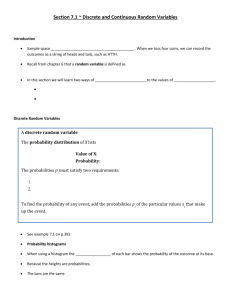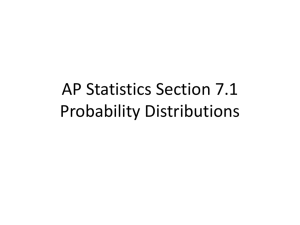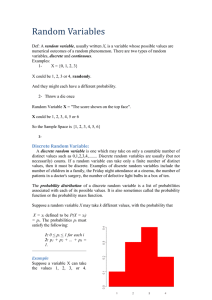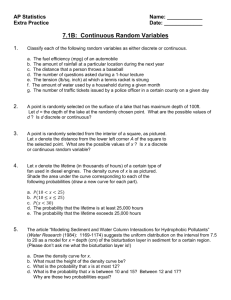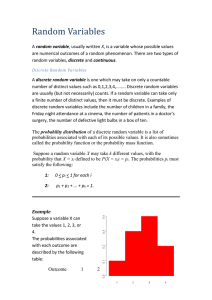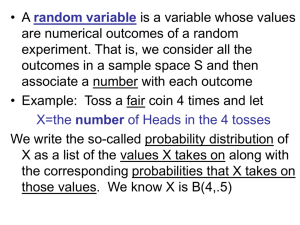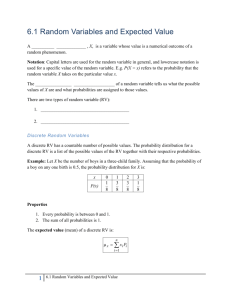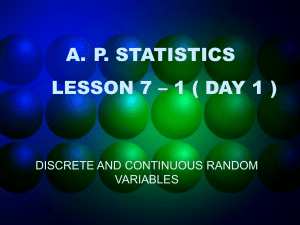7.1 B Solutions - JuabMath
advertisement
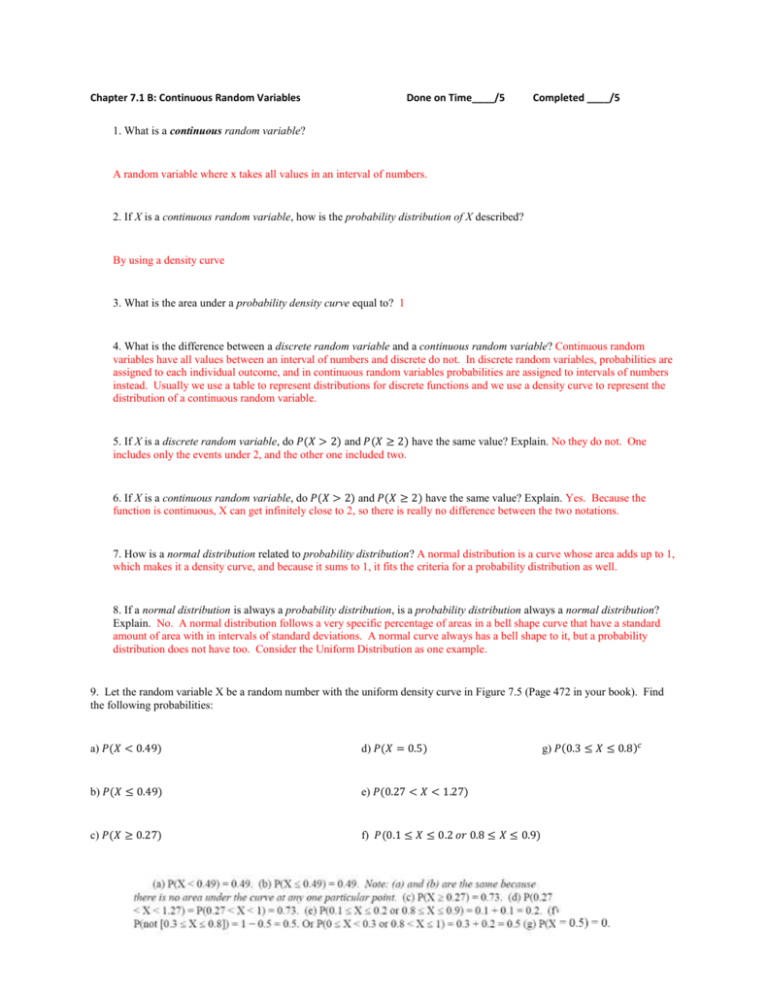
Chapter 7.1 B: Continuous Random Variables Done on Time____/5 Completed ____/5 1. What is a continuous random variable? A random variable where x takes all values in an interval of numbers. 2. If X is a continuous random variable, how is the probability distribution of X described? By using a density curve 3. What is the area under a probability density curve equal to? 1 4. What is the difference between a discrete random variable and a continuous random variable? Continuous random variables have all values between an interval of numbers and discrete do not. In discrete random variables, probabilities are assigned to each individual outcome, and in continuous random variables probabilities are assigned to intervals of numbers instead. Usually we use a table to represent distributions for discrete functions and we use a density curve to represent the distribution of a continuous random variable. 5. If X is a discrete random variable, do 𝑃(𝑋 > 2) and 𝑃(𝑋 ≥ 2) have the same value? Explain. No they do not. One includes only the events under 2, and the other one included two. 6. If X is a continuous random variable, do 𝑃(𝑋 > 2) and 𝑃(𝑋 ≥ 2) have the same value? Explain. Yes. Because the function is continuous, X can get infinitely close to 2, so there is really no difference between the two notations. 7. How is a normal distribution related to probability distribution? A normal distribution is a curve whose area adds up to 1, which makes it a density curve, and because it sums to 1, it fits the criteria for a probability distribution as well. 8. If a normal distribution is always a probability distribution, is a probability distribution always a normal distribution? Explain. No. A normal distribution follows a very specific percentage of areas in a bell shape curve that have a standard amount of area with in intervals of standard deviations. A normal curve always has a bell shape to it, but a probability distribution does not have too. Consider the Uniform Distribution as one example. 9. Let the random variable X be a random number with the uniform density curve in Figure 7.5 (Page 472 in your book). Find the following probabilities: a) 𝑃(𝑋 < 0.49) d) 𝑃(𝑋 = 0.5) b) 𝑃(𝑋 ≤ 0.49) e) 𝑃(0.27 < 𝑋 < 1.27) c) 𝑃(𝑋 ≥ 0.27) f) 𝑃(0.1 ≤ 𝑋 ≤ 0.2 𝑜𝑟 0.8 ≤ 𝑋 ≤ 0.9) g) 𝑃(0.3 ≤ 𝑋 ≤ 0.8)𝑐 10. Let X be a random number with a uniform distribution between 0 and 1 as described in Example 7.3 and Figure 7.5 (page 472) in your book. Find the following probabilities: a) 𝑃(0 ≤ 𝑋 ≤ 0.4) c) 𝑃(0.3 ≤ 𝑋 ≤ 0.5) b) 𝑃(0.4 ≤ 𝑋 ≤ 1) d) 𝑃(0.3 < 𝑋 < 0.5) f) What important fact about continuous random variables does comparing your answers to c) and d) illustrate?

